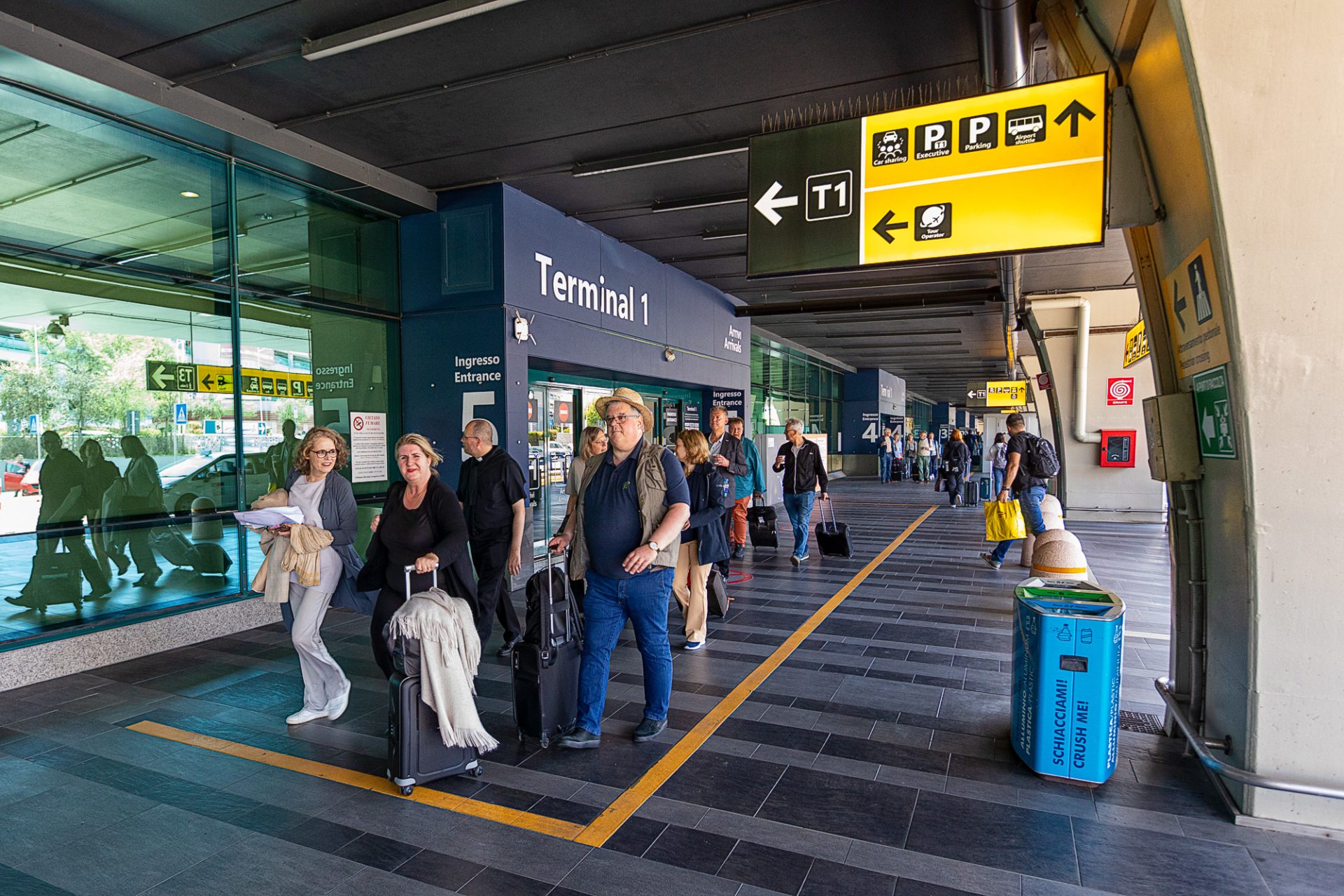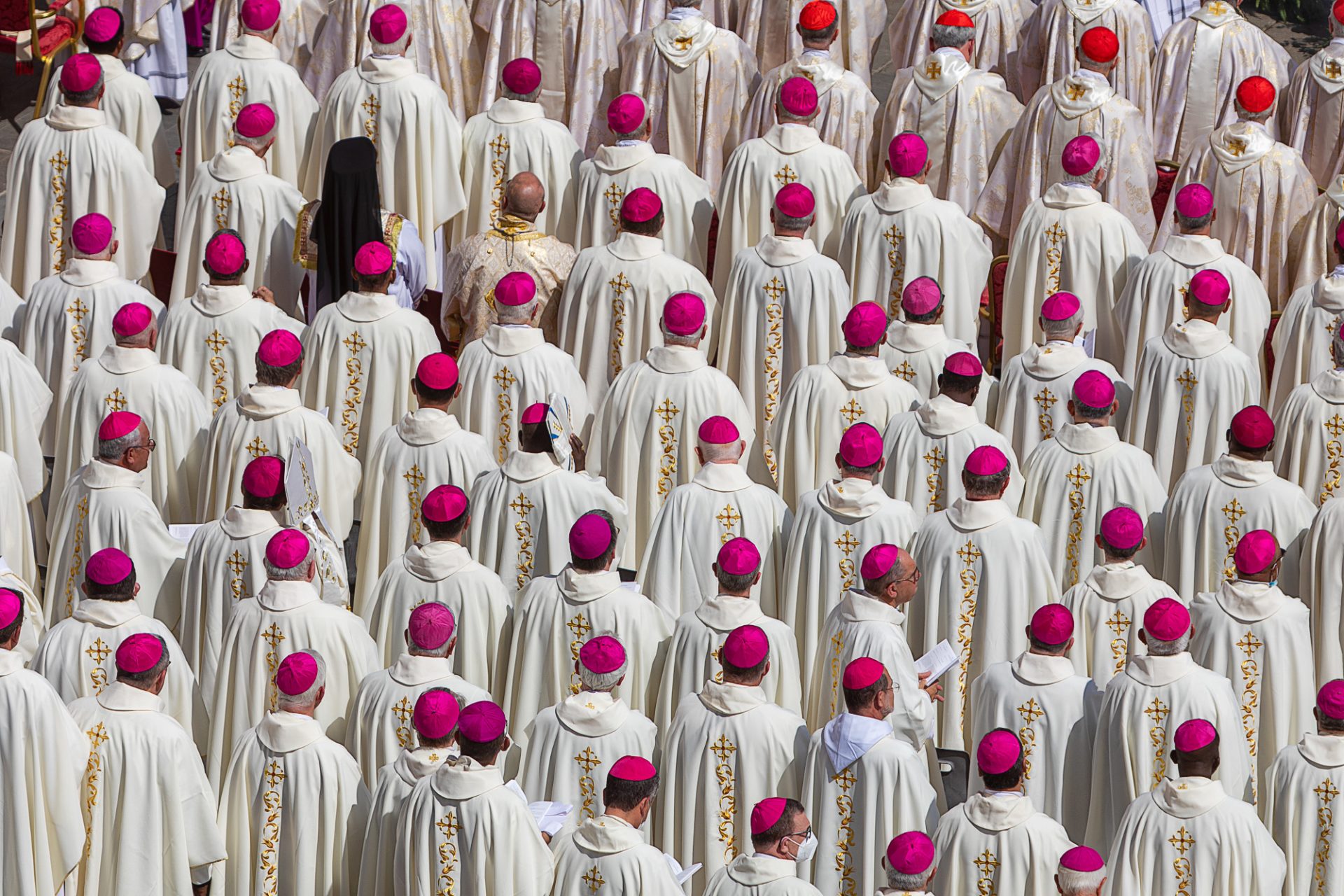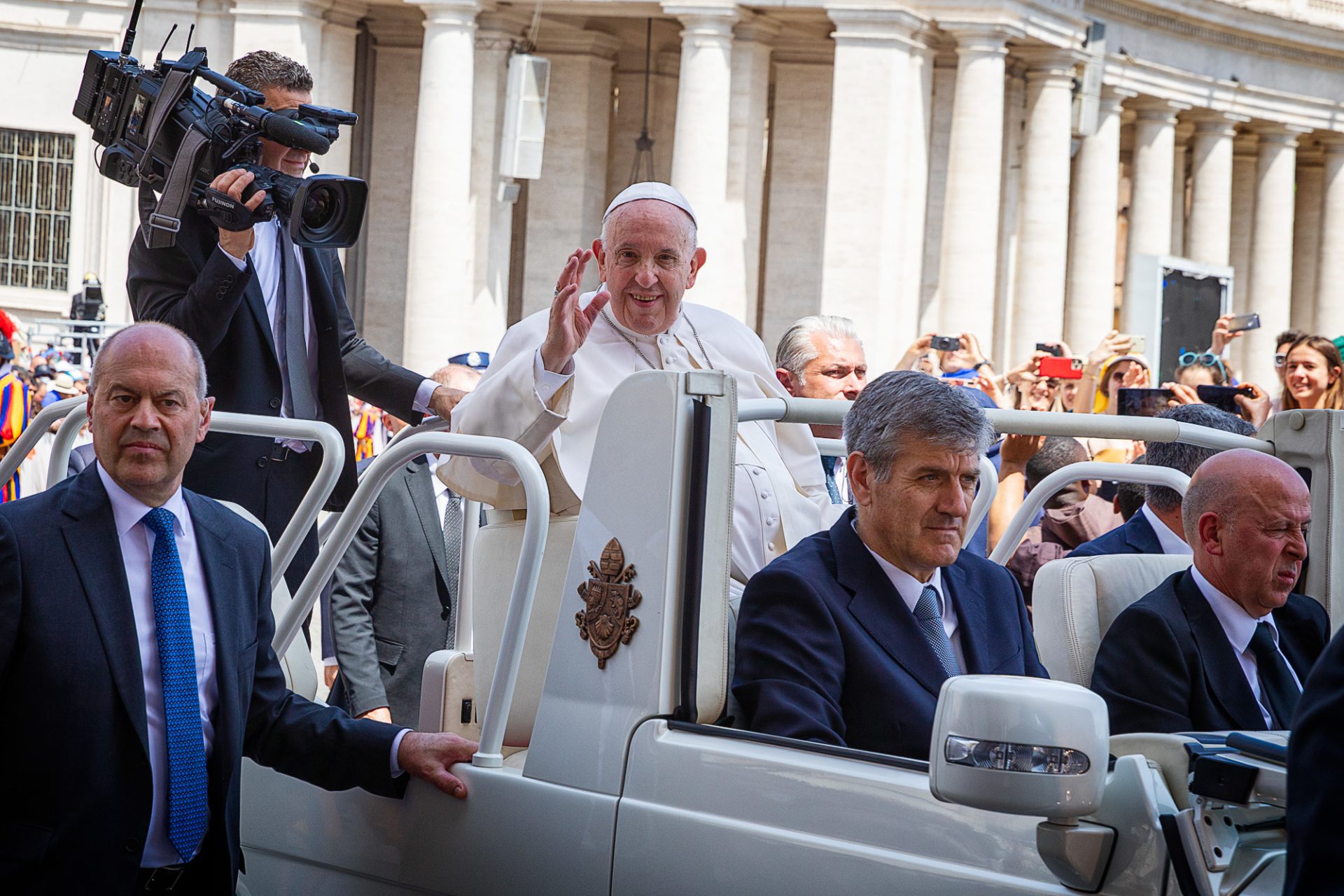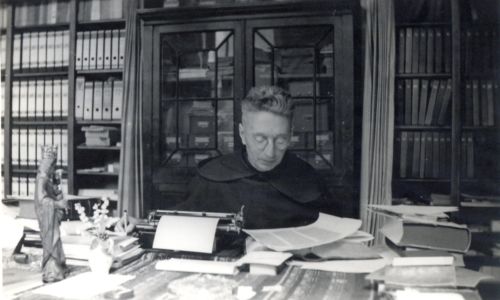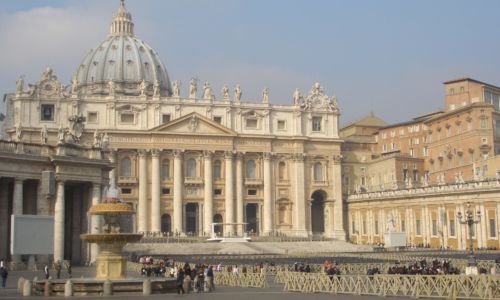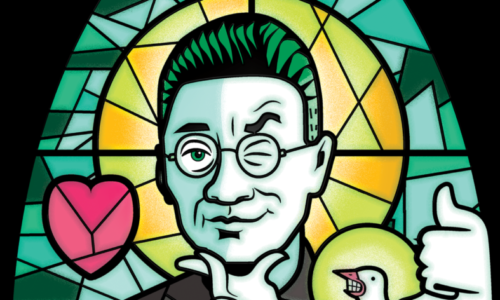This is how the delegation from Nijmegen experienced the canonisation of Titus Brandsma in Rome
-
 Photo: Dick van Aalst
Photo: Dick van Aalst
The Carmelite priest, former professor and rector Titus Brandsma was declared a saint in St. Peter’s Square in Rome yesterday. A delegation from Radboud University was present at the canonisation led by Pope Francis. ‘Given the war in Ukraine, Brandsma’s canonisation feels like an obligation.’
Sunday morning 15 May, 7:00 am.
The chapel and the small shop with Catholic devotional items aren’t yet open, but hotel guests are already starting to fill the breakfast room at the pilgrims’ hotel Casa Tra Noi. Pilgrims from Europe and Africa quickly eat some yogurt or a cheese roll before beginning their 15-minute walk to St. Peter’s Square where, at 10 am, ten individuals will be canonised, including the former Carmelite priest, professor and rector of the Catholic University of Nijmegen – now Radboud University – Titus Brandsma.
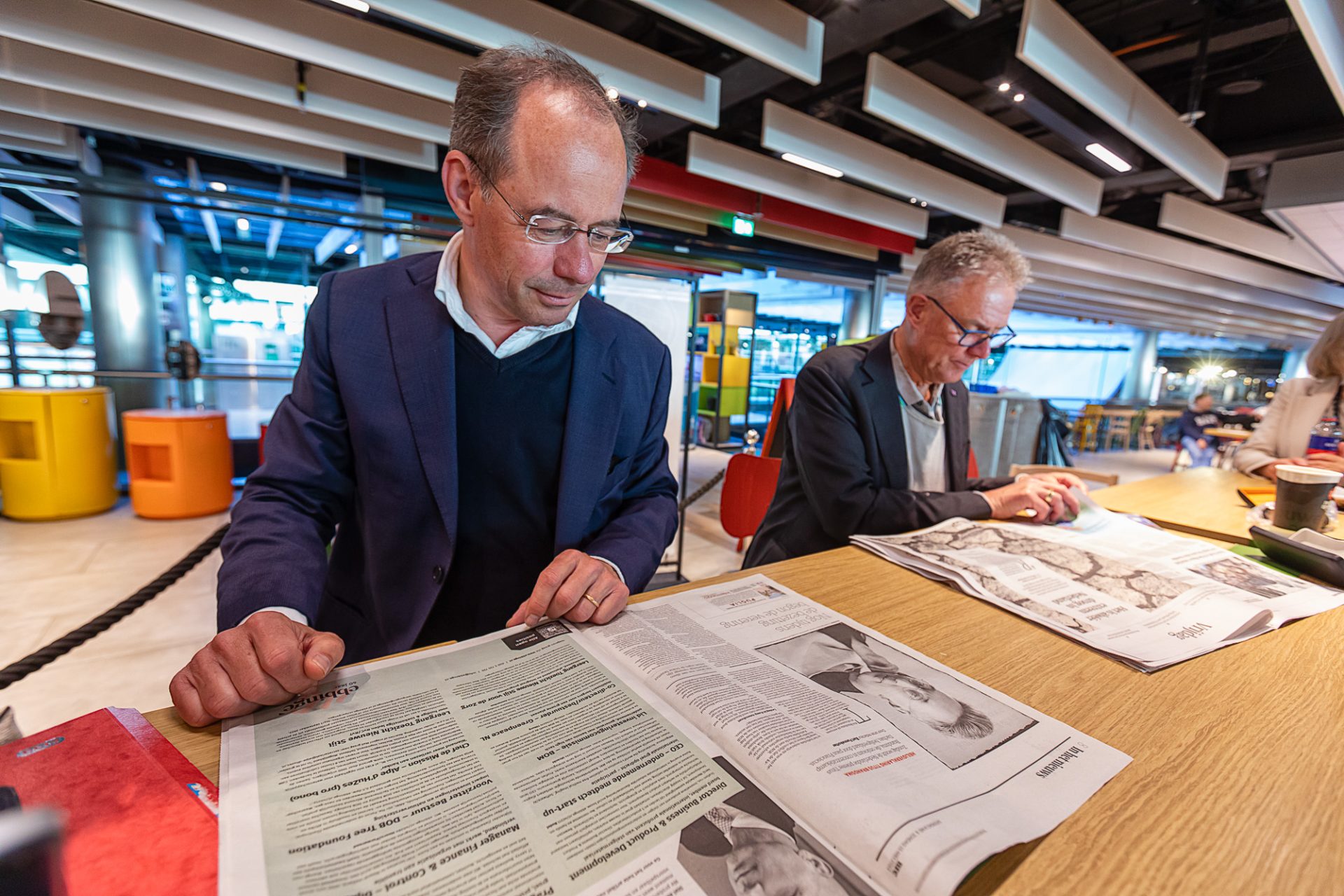
Even though he will soon be sitting only ten meters away from the Pope at the Mass, the present rector magnificus Han van Krieken isn’t stressed. ‘I just have to be present, that’s all,’ he says while sipping his coffee.
Van Krieken had previously told Vox that he felt it was important to be in Rome with a delegation from Radboud University because Brandsma was an important member of the academic community that is now receiving special global recognition. Accompanying the rector in Rome are Merel van Vroonhoven, chair of the Supervisory Board, four deans, student pastor Jos Geelen and a few members of the staff at the Titus Brandsma Institute. From Saturday to Monday they will attend three Masses, the climax being the canonisation in St. Peter’s Square.
Another member of the party is Hubert Bruls, the mayor of Nijmegen. The Radboud alumnus says that he was proud to be allowed to represent Nijmegen in St. Peter’s Square. ‘Brandsma was not only a priest, but also a journalist, a mystic and someone who spoke out against totalitarian regimes even prior to Hitler’s seizure of power in 1933,’ he says. ‘Because of his resistance to the Nazis he lost his life. You don’t have to believe in saints to be affected by his story.’
Of the 18 members of the Radboud delegation, Inigo Bocken is perhaps the closest to Brandsma. Since 2018, the academic staff member of the Titus Brandsma Institute has been working on an intellectual biography of Brandsma. He has read all of the 4000 remaining texts written by the future saint. His book is expected to be finished in 2023 when the university celebrates its centennial.
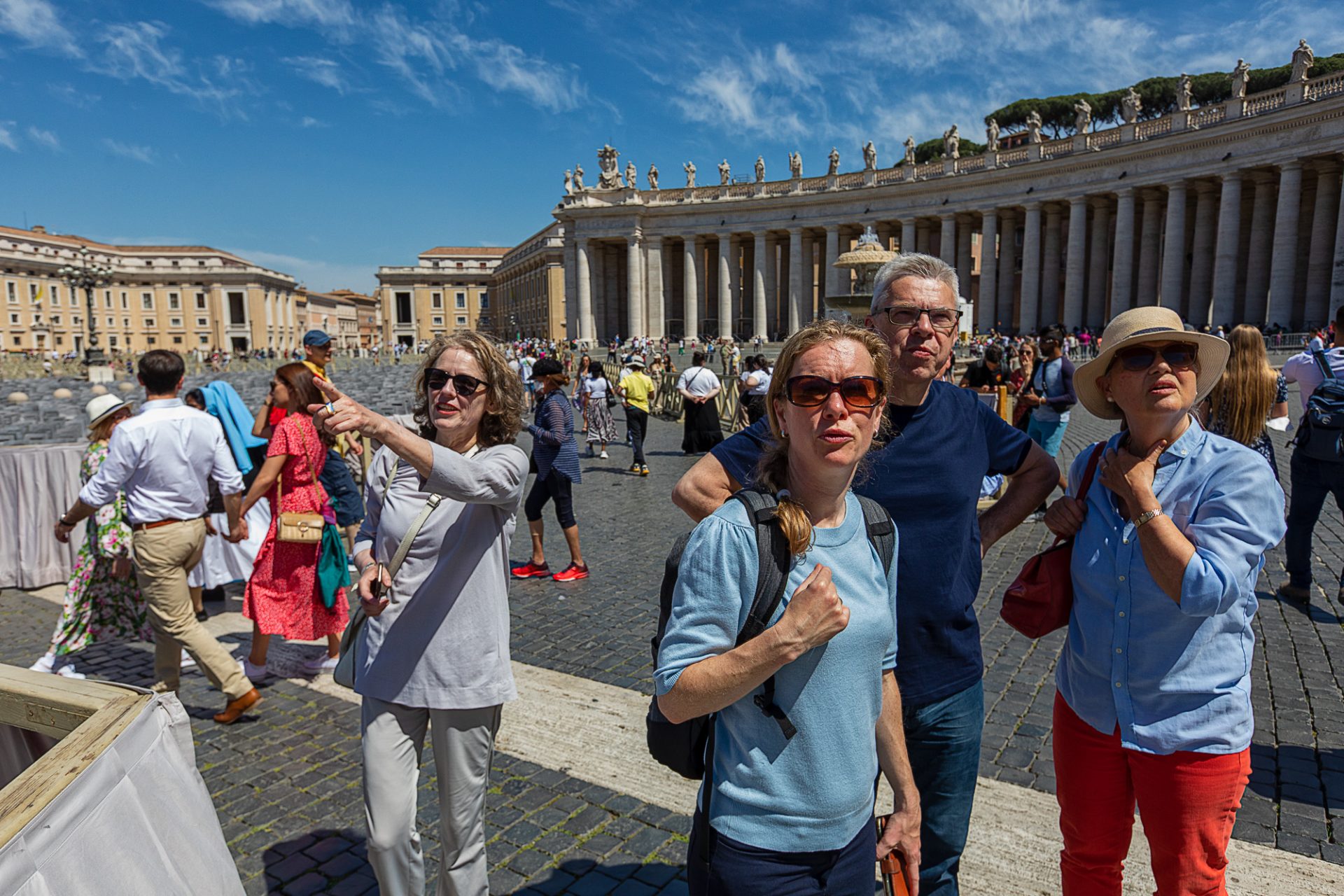
Bocken, who is a believer, was very moved by the fact that Brandsma will be canonised, he explains en route to St. Peter’s Square. ‘Brandsma wrote many texts about the lives of saints,’ he says. ‘He was my guide in thinking about those lives. I find that this thought touches me.’
Frisian flags
Saturday evening, 6 pm.
Laudate Dominum, Laudate Dominum! Omnes gentes Alleluia!
A few days prior to the canonisation, the delegation attended a Mass in Saint Paul Outside the Walls, one of the four papal basilicas in Rome. Mosaics of all of the popes, from Saint Peter to the current pope, have been set in recesses around the church. What is striking is that only a few recesses are still empty. ‘After Francis there is space for only five other popes,’ jokes Christoph Lüthy, Professor of the History of Philosophy. ‘I’m curious to see what will happen then. You could create a Dan Brown story about it.’
The church is filled with pilgrims from various countries, and a few believers have brought Dutch and Frisian flags with them. Next to the altar hangs a large painting depicting Titus Brandsma.
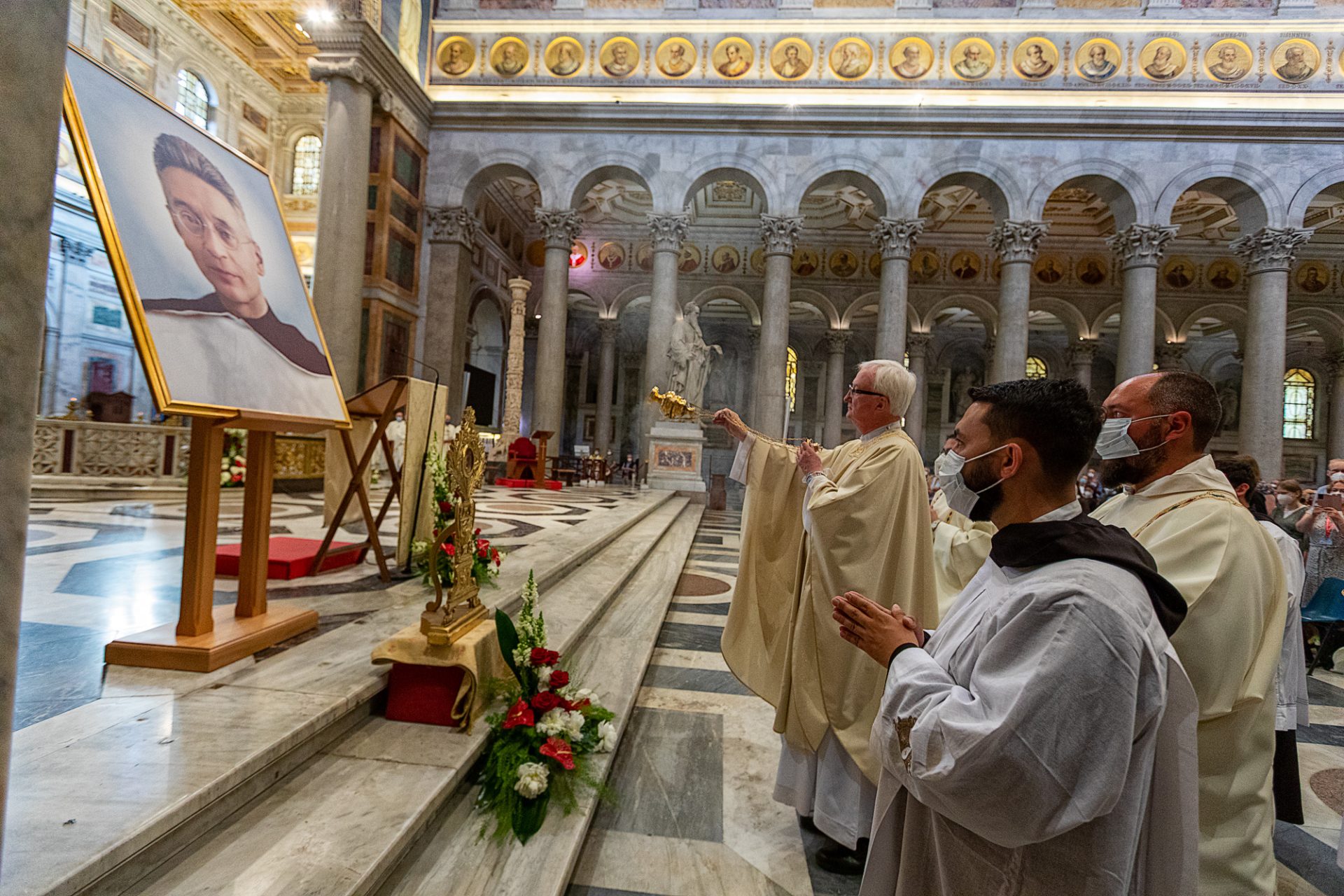
The Mass begins with a process of eminent clergy who move step by step through the basilica towards the altar. An altar boy at the head of the procession is holding a large cross. There are also two postulators from the Carmelite Fathers who had prepared the dossier on Brandma’s canonisation in the Vatican. Also shuffling forward is Michael Driscoll, the American Carmelite who recovered from an aggressive form of cancer because, as he explains, he prayed to Brandsma. A commission of doctors had agreed that his recovery couldn’t be explained medically, which opened the road to Brandsma’s canonisation.
Chair of the Supervisory Board Merel van Vroonhoven filmed the celebration and later shared this via her LinkedIn profile. She says that she thought it was important to be in Rome in order to better understand the identity and the history of Radboud University. ‘I attach great value to that. Also with an eye to the future. We will have to partly reinvent our identity, but our Catholic history and origin, so visible here today, form a strong base. Even though the bishops no longer play a formal role in managing our university, I still enjoy searching for the connections. I’m looking forward to meeting them at this afternoon’s lunch with the Carmelites.’
The man responsible for that decision, Cardinal Wim Eijk, is walking in the procession only a few meters away from Van Vroonhoven. Under Eijk’s leadership, the connection between the Church and the university deteriorated until the establishing foundation behind the university lost the predicate ‘Catholic’ in the autumn of 2020. Since then the university as a whole has had no formal relationship with the Church, but rather an informal one particularly via Gerard de Korte, the bishop of Den Bosch. There are still some links to the Church via a few Catholic institutions at the university, such as the Theology Faculty.
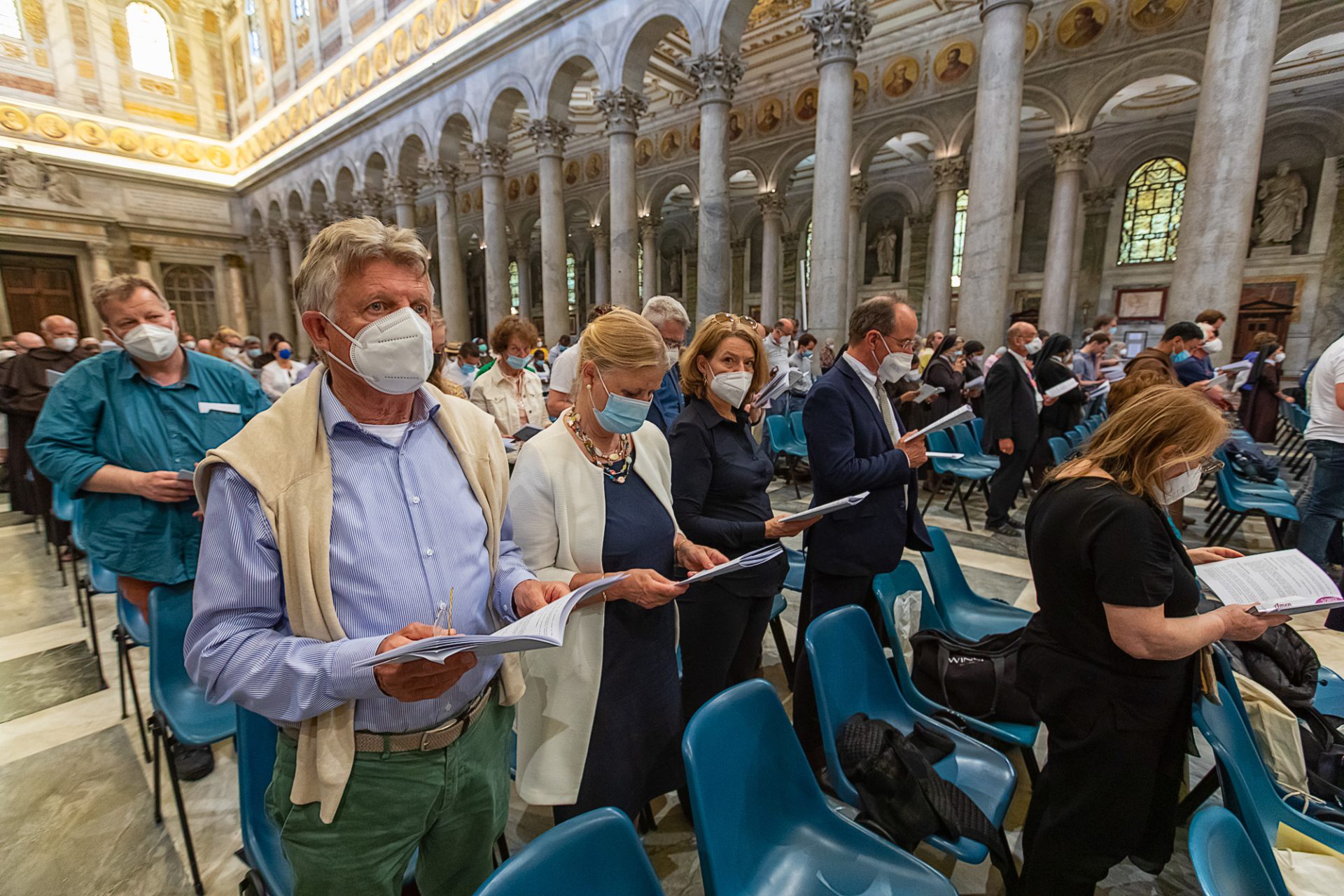
After the Mass, 13 members of the delegation from Nijmegen are taken in black vans to a Roman restaurant. They evaluate the ceremony during their taxi ride. Conclusion: it was a lovely ceremony, but the prior-general should have talked a bit faster. There are divided opinions about the choir. ‘The singing could sometimes have been more on tune,’ says FFTR dean Murre-van den Berg, who sung the songs during the Mass. ‘And the acoustics in the basilica could have been better.’
In the restaurant with its view of the Passetto di Borgo, the pope’s 800-meter-long escape route between the Papal Palace and the Castel Sant’Angelo, Christoph Lüthy orders dinner in perfect Italian. The evening ends early because most of the company had set their alarm clocks for 4 am so they could leave for Schiphol an hour later.
Sagrato
Sunday morning, 8:20 am.
Thousands of pilgrims are already queuing in order to get a spot in St. Peter’s Square. Everyone entering the square first has to pass by security. It looks like a football match. Since it’s not immediately clear which entrance the delegation from Nijmegen should use things are a bit tense. After showing their orange tickets, the delegation is allowed to jump part of the queue and join the masses.
‘Ready for this’ texts mayor Hubert Bruls to the Rome-group app together with a selfie showing his mayoral chain. At the invitation of the Ministry of Foreign Affairs, he and rector Han van Krieken are sitting close to the altar near Minister Wopke Hoekstra and the Italian president Sergio Mattarella. Van Krieken is wearing the rector’s chain that Brandsma wore in the academic year 1932-1933.
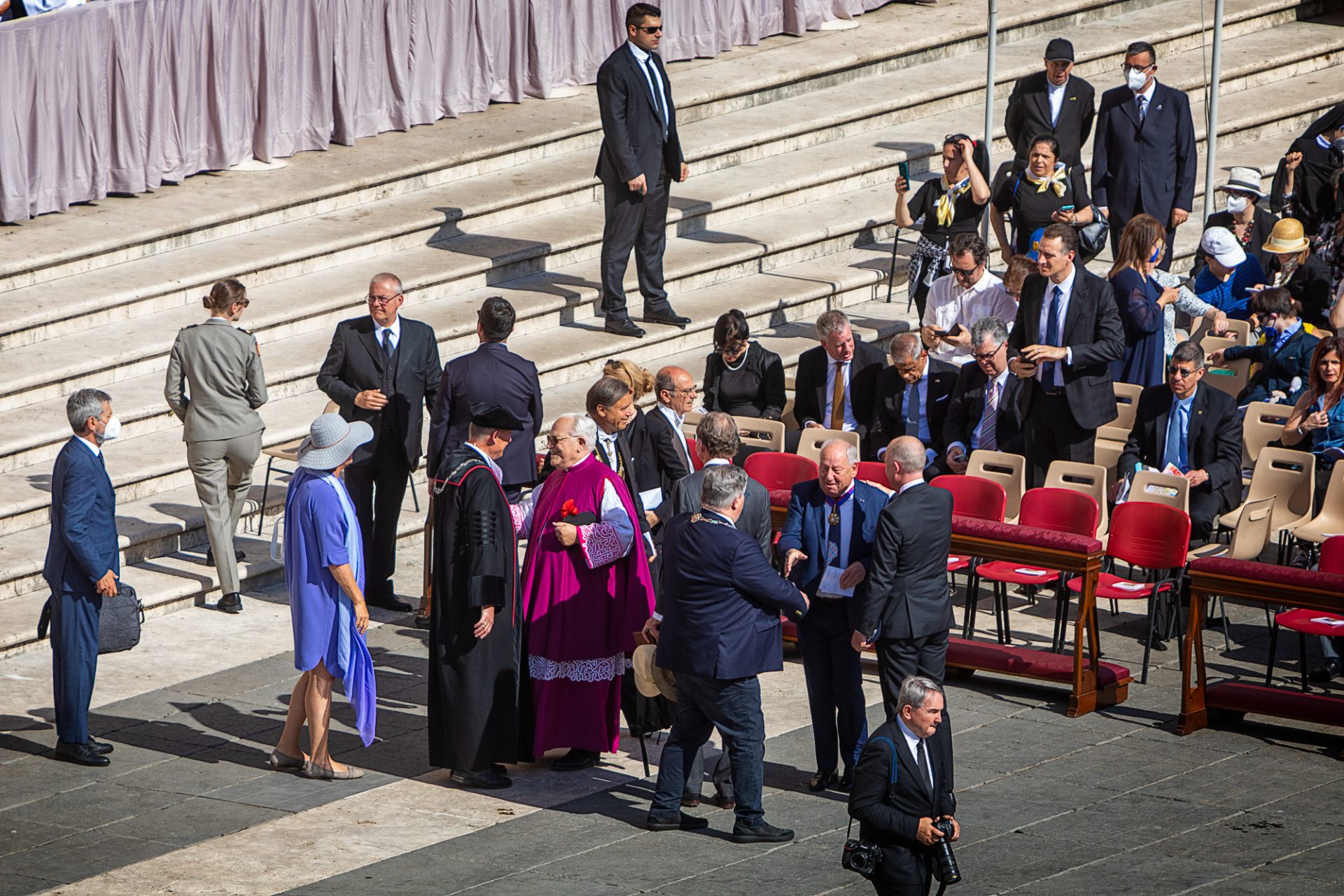
The rest of the delegation from Nijmegen is sitting on the other side of the altar, in the so-called Sagrato. These seats are reserved for guests of the Carmelites, the order to which Brandsma belonged. Brandsma’s portrait is displayed in a central position on the banners hanging at the portico of St. Peter’s Basilica, and his biography is the first to be described in the Mass pamphlet. ‘It’s clear to me who the most important saint is for the Vatican,’ says dean of the Faculty of Arts, José Sanders. ‘Perhaps not a coincidence: Brandsma is one of the two martyrs being canonised today and of those two he died most recently.’
Although it’s not yet 9:30 am, the sun is high in the sky. People take off their coats and put on hats and sunglasses. Inigo Bocken and dean of theology Carl Sterkens greet Titus Hettinga and his wife Jetty, both of whom have travelled from Friesland to Rome. Hettinga is the grandson of Titus Brandsma’s sister. He was born in 1943, a year after Brandsma’s martyrdom and he was given the same name as his great uncle. ‘It’s very special to be here, although we do wonder what Titus himself would have thought about all this attention,’ says Jetty Hettinga. ‘He tried to live a full life through his small actions.’
By now the tension begins to increase in St. Peter’s Square. As soon as a small black Fiat drives towards the podium, everyone holds their smartphone in the air. And there’s loud applause as Pope Francis gets out of the car.
‘In Nomine Patris et Filii et Spiritus Sancti’. After the Latin sign of the cross, the Pope immediately begins the canonisation ceremony. The first name he mentions is Titus Brandsma. The members of the delegation from Nijmegen give a cheer and pat one another on the shoulder. From now on, Brandsma’s name will be included in the Roman Catholic Church’s Book of Saints.
When the ceremony ends, the members of the delegation from Nijmegen remain in the Sagrato to reminisce. Student pastor Jos Geelen takes a photo of the thousands of believers still in St. Peter’s Square. ‘The high point for me was when the Pope first prayed Cum Sanctis Tito during the ceremony. Voilà, that’s why I’ve come to Rome as a pilgrim, I thought.’
Rector magnificus Han van Krieken is still smiling when he walks past the altar. ‘It’s difficult to put into words what I now feel because so many thoughts are crossing my mind,’ he says. ‘It was a lovely ceremony. The Pope is a symbolic figure. He may walk with some difficulty, but he’s still a very good speaker.’
Van Krieken feels humbled to wear the old rector’s chain. ‘It brings to life that connection with tradition and the past. And it also feels like an obligation because there’s a war in Ukraine and still so much poverty in the world.’
Mayor Bruls, a member of the CDA, became a bit emotional during the Mass, he says. ‘I’m a Catholic, but not orthodox. But when believers from all over the world sing the Credo together, that moves me. It’s so special that thousands of people from across the globe stand for two hours in the hot sun to participate in canonisation. Whether you’re a believer or not, Titus Brandsma is a very inspiring figure. Many residents of Nijmegen feel the same; there was a reason that he was chosen as Nijmegen’s greatest resident ever.’
Who was Titus Brandsma?
Titus Brandsma (1881 – 1942) was a Carmelite priest, an academic and a publicist from the Frisian city of Bolsward. Since the founding of the Catholic University of Nijmegen (now Radboud University), he had been a professor of philosophy, although mediaeval mysticism was closer to his heart and to his field of specialism. In the academic year 1932-1933 Brandsma was rector magnificus. During the Second World War Brandsma went to the editors of Catholic newspapers to try to convince them not to accept any NSB [Dutch Nazi Party] advertisements. That’s the reason why he was taken prisoner by the Germans on 19 January 1942; on 26 July of that same year he died in the concentration camp Dachau. This link brings you to a long article about Brandsma’s life.
